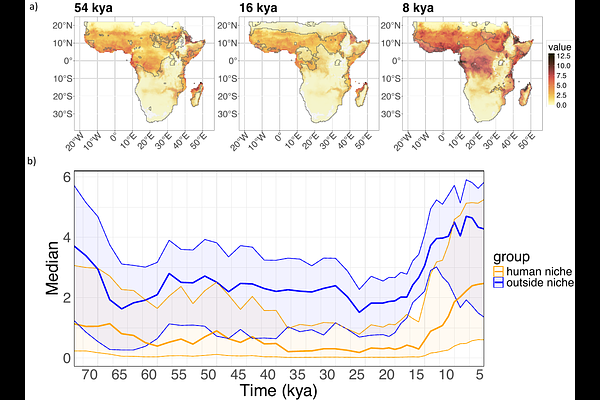Malaria shaped human spatial organisation for the last 74 thousand years

Malaria shaped human spatial organisation for the last 74 thousand years
Colucci, M.; Leonardi, M.; Blinkhorn, J.; Irish, S. R.; Padilla-Iglesias, C.; Kaboth-Bar, S.; Gosling, W. D.; Snow, R. W.; Manica, A.; Scerri, E. M. L.
AbstractThe mechanisms driving the spatial organisation of early human societies in Africa are typically addressed through climate variables 1-3. However, genetic and archaeological studies have also suggested diseases as a major source of selection in the Pleistocene. Here, we explore whether P. falciparum-induced malaria, a major world disease, drove habitat choice in human societies between 74 and 5 thousand years ago (kya). Using species distribution models of three main mosquito complexes with palaeoclimatic reconstructions and combining the results with epidemiological information, we estimated an index of malaria transmission risk in sub-Saharan Africa through time. We then correlated it with an independent reconstruction of the human niche over the same time period and region. Our results show that humans strongly avoided or were unsuccessful in potential malaria hotspots. The effects of these choices shaped human demography for the last 74 kya, and likely much earlier, by fragmenting human societies over time and contributing to the formation of modern population structure. Our results highlight the importance of considering disease distributions when modelling estimates of past human demography, demonstrating that factors beyond climate underlay patterns of human habitat choice, exchange, and dispersal.